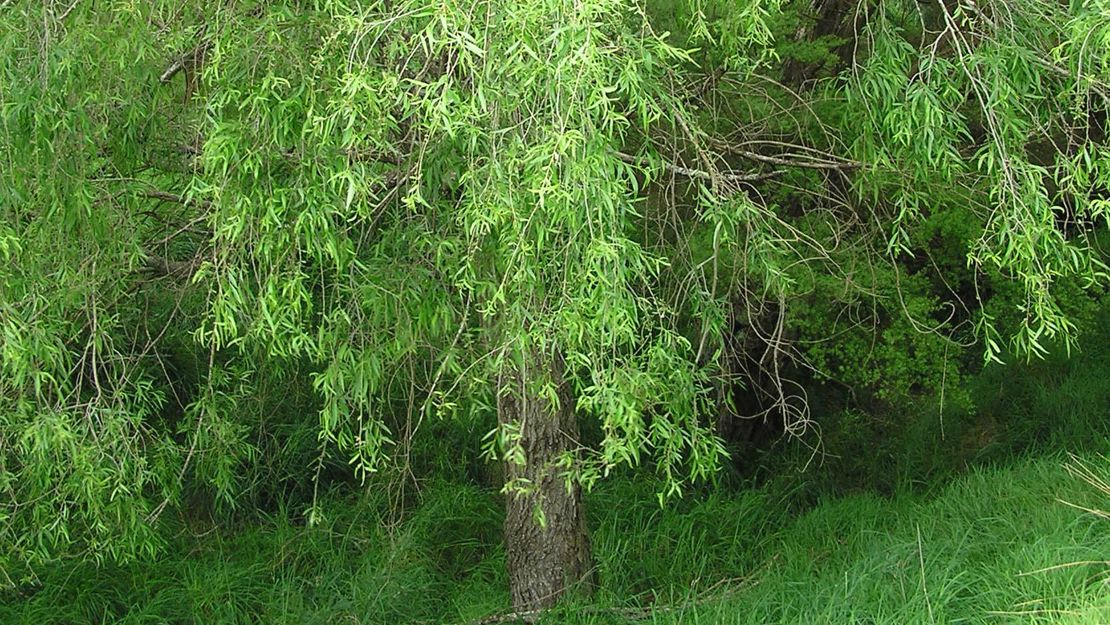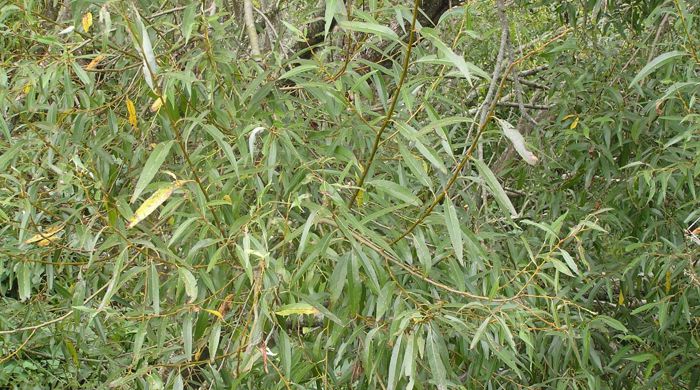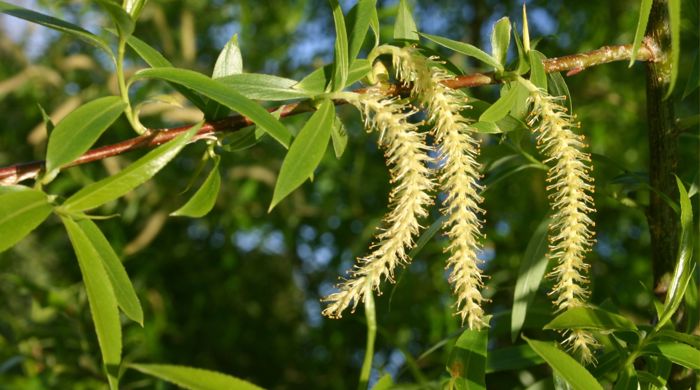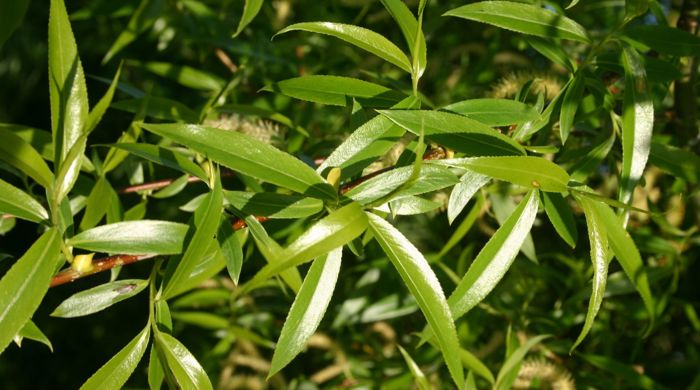Salix fragilis
Crack willow
Family: Salicaceae
Origin: Eurasia

Regional Pest Management Plan (RPMP) status
- National Pest Plant Accord Species
- Whole region — Sustained control
General description
Shrub or tree < 25 m high. Stems are dark brown/green and snap with a crack when bent. Leaves are lanceolate and < 15 x 2.5 cm. Catkins are < 7.5 cm long and appear with or after leaves.
What you need to know
To help protect our environment:
- You must not breed, distribute, release or sell crack willow. As crack willow is a National Pest Plant Accord species, these restrictions apply within the Auckland region and across the whole of New Zealand.
- You must not plant crack willow within the Auckland region, unless you are transferring an existing plant on your land to another location within the boundaries of the same property.
- You must destroy any crack willow on land that you occupy if it has been planted in breach of the above rules and you are directed to do so by an authorised person.
Habitats
Wet habitat, wetlands, water bodies, water body margins, swamps, wet areas behind coastal dunes.
Dispersal
Vegetative spread from stem fragments and suckers, dispersed by water. Human-mediated dispersal through deliberate plantings.
Impact on environment
Competes with and displaces native species. Alters hydrology of waterways through blocking, flooding and structural changes. May alter soil decomposition cycles.
Control
Site Management
Follow up treated areas 3 times per year. Encourage natural regeneration of native plants or replant treated areas where possible after 2-3 treatments to establish dense ground cover and minimise reinvasion.
Recommended approaches
Physical control
Method: Dig out.
Plant parts requiring disposal: All parts.
Disposal options: Remove to greenwaste or landfill if practical.
Biocontrol
Biocontrol is currently not available for this species.
Community agrichemical control recommendations
No qualifications: Cut stump and paste freshly cut base of stems with glyphosate gel. Cut material must be removed or it will regrow. Cut stump and spray freshly cut base with 250ml glyphosate green per 1L of water. Cut material must be removed or it will regrow.
Basic Growsafe certified: Drill and inject trees with 500ml glyphosate per 1L of water if safe to do so. Drill 18mm holes (tangentially angled downwards) in a spiral up the trunk. For 50mm stems drill tne hole. For 100mm stems drill two holes. For larger stems drill holes 150mm apart.
Certified Handler/Experienced agrichemical user: Foliar spray with 150ml glyphosate green per 10L of water and 20ml penetrant.
Safety notes
Large trees must not be drilled that are closer than 1.5 times the height of the tree from paths, walkways and property.
Trees over 4 metres in height should be treated and then removed by a qualified arborist.
Caution: When using any herbicide or pesticide please read the label thoroughly to ensure that all instructions and safety requirements are followed.






